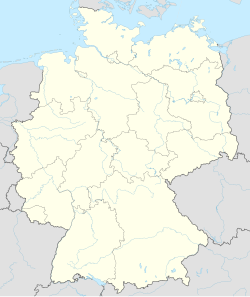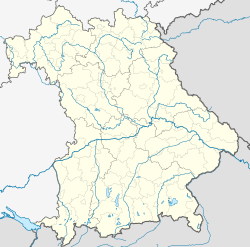The mention of the "Zwissel," the confluence of the Kalter Steinach (now Moosbach) and Warmer Steinach, in the 1402 fief book of Burgrave John III, is considered the first documented mention of the area around Warmensteinach. To the southeast of the Zwissel, the Upper Palatinate bordered the confluence; to the west, it was the territory of the Burgraves of Nuremberg and their legal successors, the Principality of Bayreuth.
In 1536, after centuries of dispute, this border was established and marked by boundary stones. The name of the municipality's part, Grenzhammer, recalls the border that was significant for centuries, separating politically, linguistically, confessionally, and ethnically. Below Grenzhammer, a column still stands, bearing the white and blue Bavarian diamonds on one side and the black and white Hohenzollern coat of arms on the other. The Paschenweiher pond, not far from Karches, takes its name from an old smuggling route.
For a long time, this boundary represented the denominational divide between Catholic and Protestant religious affiliation, and the dialect divide between Franconian and Bavarian. The inhabitants of Warmensteinach were Protestant, while those of Oberwarmensteinach and Fleckl were Catholic. In Warmensteinach and Oberwarmensteinach, different dialect expressions for the same word still exist. From the east, the influence of the town of Eger was noticeable. The Zwissel is documented in Warmensteinach's coat of arms.
The town itself was first mentioned in writing in 1558 as "Steinach." It was named after the river.
Mills and hammer mills along the Steinach River utilized water power. Mining was carried out on the Helle Glocke and Eisenberg hills. A report by Johann German Barbing to Elector Ferdinand Maria dated January 16, 1666, states: "Warmenstainach. The hammer in W. belongs to Hans Paur, is also operational and is 'verbstandt' (a hammer mill) reported to Altmanshausen, where 'Sündter' (sinder) is mostly forged. — There is also a wire hammer in W., belonging to Michael Schenkl, and is operational."
Warmensteinach formed a community with Neuwelt. Towards the end of the 18th century, Warmensteinach had 73 properties (1 sawmill, 1 wire and sawmill, 1 weapon hammer, 1 ironworks, 13 estates, 10 half-estates, 13 small estates, 4 half-estates, 1 solden estate, 1 half-solden estate, 1 small solden estate, 1 small estate, 1 inn, 9 drip houses, 4 houses, 9 small cottages, 2 button-works). High jurisdiction belonged to the Bayreuth City Vogtei Office of Bayreuth. The village and community lordship, as well as the manorial lordship over all properties, belonged to the Amt Weidenberg.
As part of the Prussian Principality of Bayreuth since 1792, Warmensteinach became part of France in the Treaties of Tilsit and was sold to the Kingdom of Bavaria in 1810. From 1797 to 1810, the town was under the jurisdiction of the Neustadt am Kulm Justice and Chamber Office.
In 1812, as a result of the municipal edict, the Warmensteinach tax district was established. In addition to the main town, it included Brunnenhaus, Kaltensteinach, Neuhaus, Neuwelt, Neuwerk, Sonnengrün, and Zainhammer. At the same time, the rural municipality of Warmensteinach was created, to which Brunnenhaus, Neuwelt, Neuwerk, and Zainhammer belonged. Its administration and jurisdiction were assigned to the Weidenberg Regional Court, and its financial administration to the Bayreuth Rent Office (renamed Bayreuth Tax Office in 1919). With the municipal edict of 1818, Kaltensteinach was incorporated. Somewhat later, the Pfeiferhaus (Pfefferhaus) was founded on the municipal territory. From 1862, Warmensteinach belonged to the Bayreuth District Office (renamed Bayreuth District in 1939). Jurisdiction remained with the Weidenberg Regional Court (converted to Weidenberg District Court in 1879), and since 1931, the Bayreuth District Court has been responsible. In 1964 the municipality had an area of 3,061 km².










